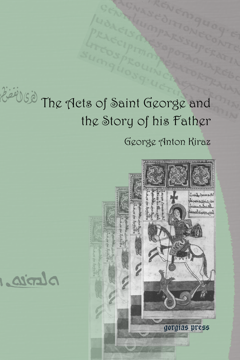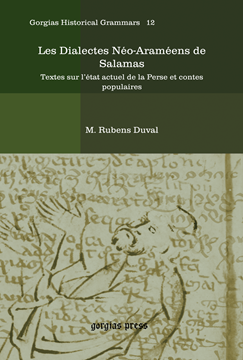Tracing the Bridegroom in Dura
The Bridal Initiation Service of the Dura-Europos Christian Baptistery as Early Evidence of the Use of Images in Christian and Byzantine Worship
ISBN: 978-1-59333-738-4
This book examines the previously unexplored sources of the eleventh-century Byzantine service of Christ the Bridegroom by locating its origins in the liturgical environment of third-century Christian Syria and Mesopotamia, and especially in the baptistry of the Christian House at Dura-Europos, as well as in the texts of the Acts of Thomas, the Gospel of Philip and the Symposium by Methodius of Olympus. More specifically, Pagoulatos analyzes the bridal initiation service (the earliest known Iconophile service) of the Dura-Europos baptistery, focusing on the role that the images played in it.
$78.00 (USD) $46.80 (USD)
Linguistic Tips for Latino Learners and Teachers of English
ISBN: 978-1-59333-690-5
This book is written for both Latino (Hispanic) learners and teachers of English as a second language. The book is innovative in helping Latino learners and teachers overcome chronic and difficult barriers, such as the cases relevant to certain vowels, consonants and the overall rhythm of English. The methodology and techniques used to teach the two-vowel systems of English and Spanish is rarely encountered in modern linguistic literature.
$133.00 (USD) $79.80 (USD)
American Journal of Ancient History (New Series 3-4, 2004-2005 [2007])
3-4
Edited by T. Corey Brennan
Series: American Journal of Ancient History: New Series Volumes 3-4
ISBN: 978-1-59333-782-7
The continuation of the historic American Journal of Ancient History this volume contains nine articles and comprises the contents of volumes 3 and 4 of the New Series (2004-2005 [2007]).
$125.00 (USD) $75.00 (USD)
The Acts of Saint George and the Story of his Father
From the Syriac and Garshuni Versions
ISBN: 978-1-59333-784-1
One of the most enduring of the saints, Saint George has seldom failed to capture the imagination of Christian readers, both ancient and modern. The Acts of Saint George, originally written in Greek, quickly spread to many linguistic traditions in the church of late antiquity. Presented here in vocalized Syriac and Arabic, the original text of the Acts is made easily accessible to readers of these languages. A detailed introduction in English summarizes the hagiography for those unacquainted with the Semitic languages. The account follows the hagiographic practice of describing the trials, steadfast faith, and martyrdom of the saint. Also included is the story of the father of Saint George, recorded in Syriac.
$60.00 (USD) $36.00 (USD)
A History of Christian Missions in China
ISBN: 978-1-59333-786-5
Starting with the religious background of China, Latourette probes why Christianity appealed to the Chinese and then launches into a detailed history of its development. He considers how Christianity began before and coped under the Mongol Dynasty and then the incursion of the Roman Catholic Missions. Briefly considering the Russian Orthodox interest in Chinese missions, he moves on to what is clearly his main concern in the Protestant influx in the nineteenth and early twentieth centuries. Considering the main events of China’s history in relation to the European powers of the day, he considers how Christianity fared into the early nineteenth century.
$314.00 (USD) $188.40 (USD)
Les Dialectes Néo-Araméens de Salamas
Textes sur l’état actuel de la Perse et contes populaires
Series: Kiraz Historical Grammars Archive 12
ISBN: 978-1-59333-787-2
This specialized study by renowned linguist Rubens Duval brings together several grammatical studies between its covers. For the most part this intriguing volume is an exploration of the dialects of Neo-Aramaic of Salmas in the area of Azerbaijan and northwest Iran. Duval transcribed in handwritten, Roman characters, the aural information he received in the region from Syrian Christians and Jews. These are translated into French, making access to the linguistic information available to non-Semitic specialists. Duval concludes the book with an article on Syriac inscriptions of Salmas. This book is very rare in the used book market.
$165.00 (USD) $99.00 (USD)


![Show details for American Journal of Ancient History (New Series 3-4, 2004-2005 [2007]) Picture of American Journal of Ancient History (New Series 3-4, 2004-2005 [2007])](https://www.gorgiaspress.com/images/thumbs/0011841_american-journal-of-ancient-history-new-series-3-4-2004-2005-2007_360.png)


